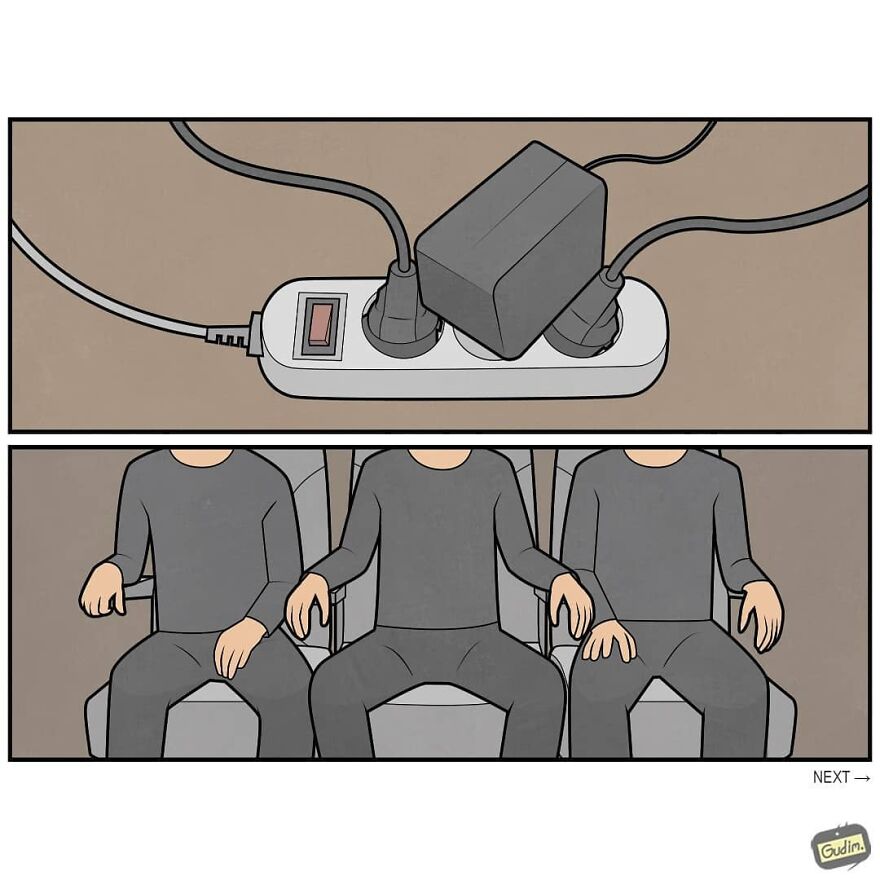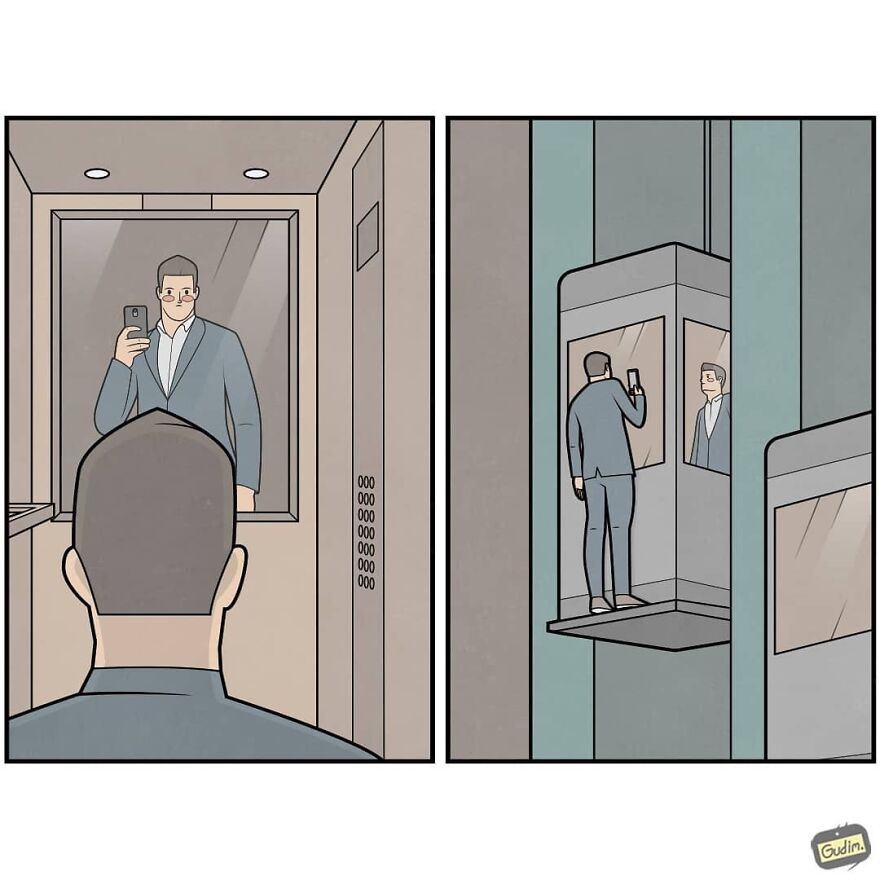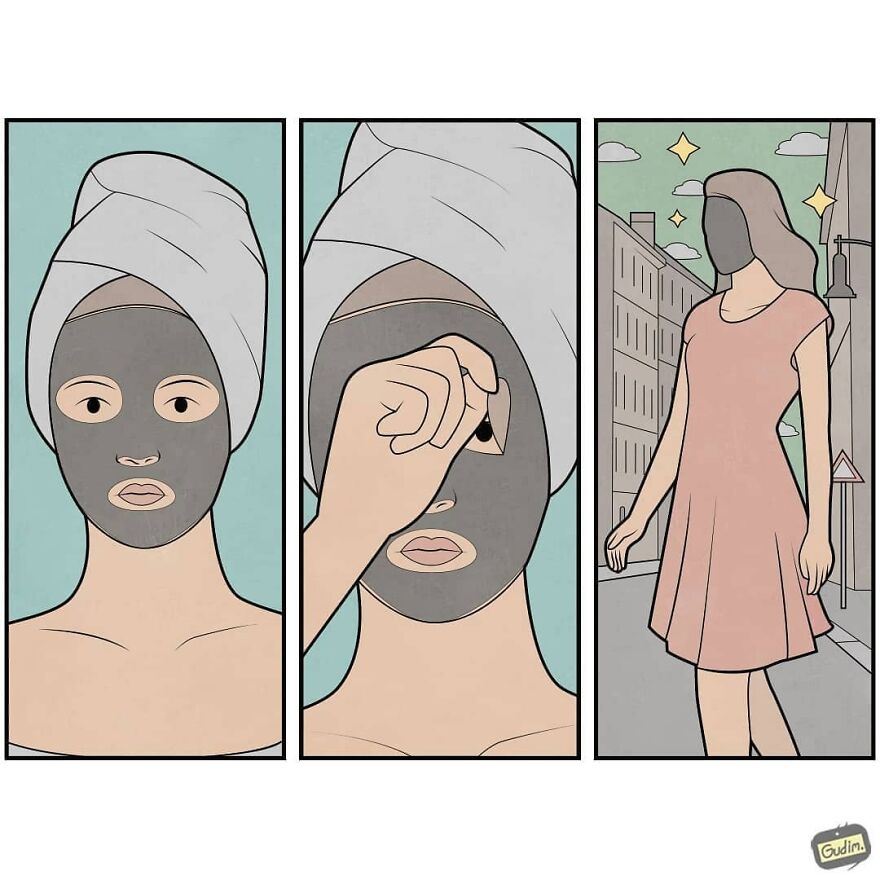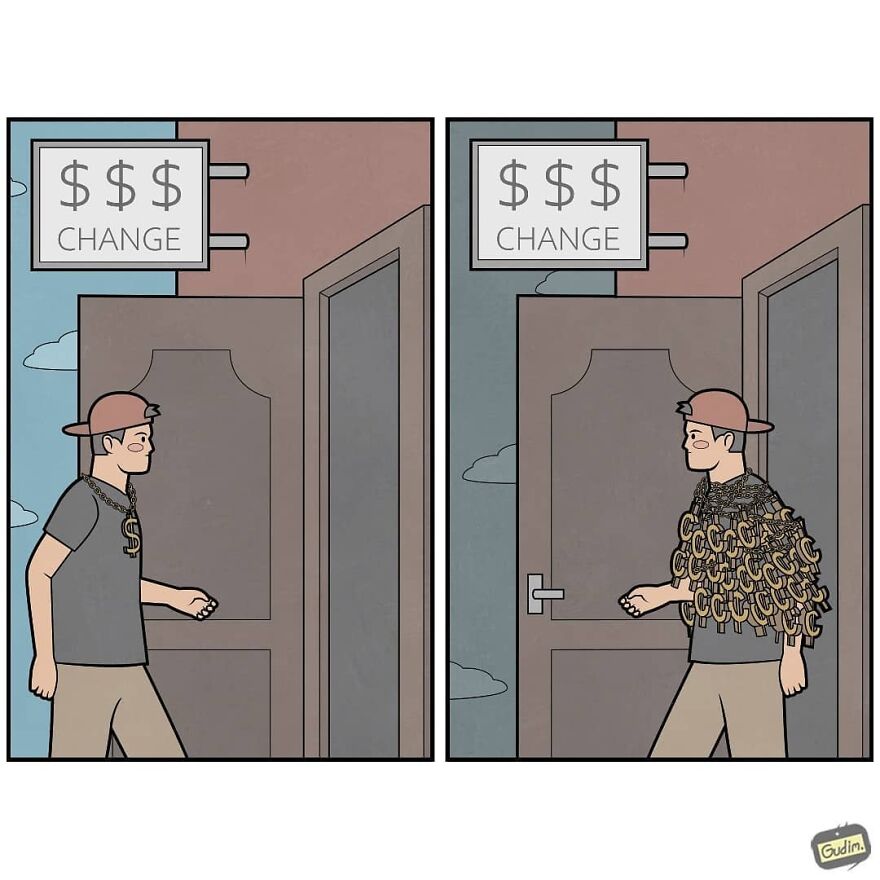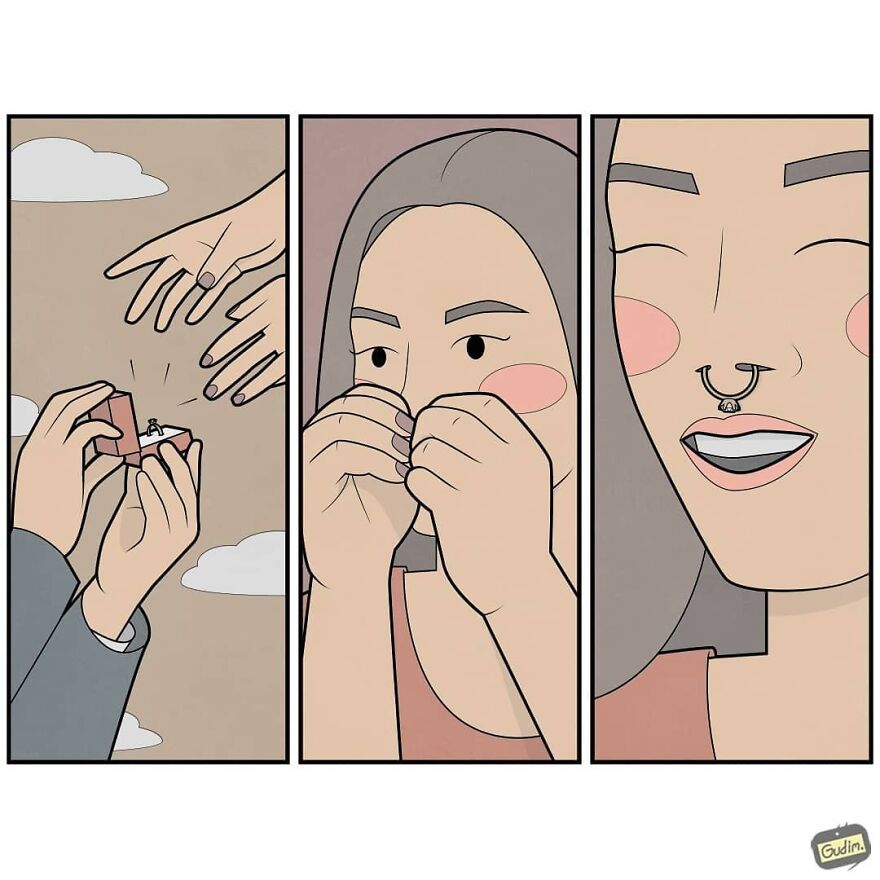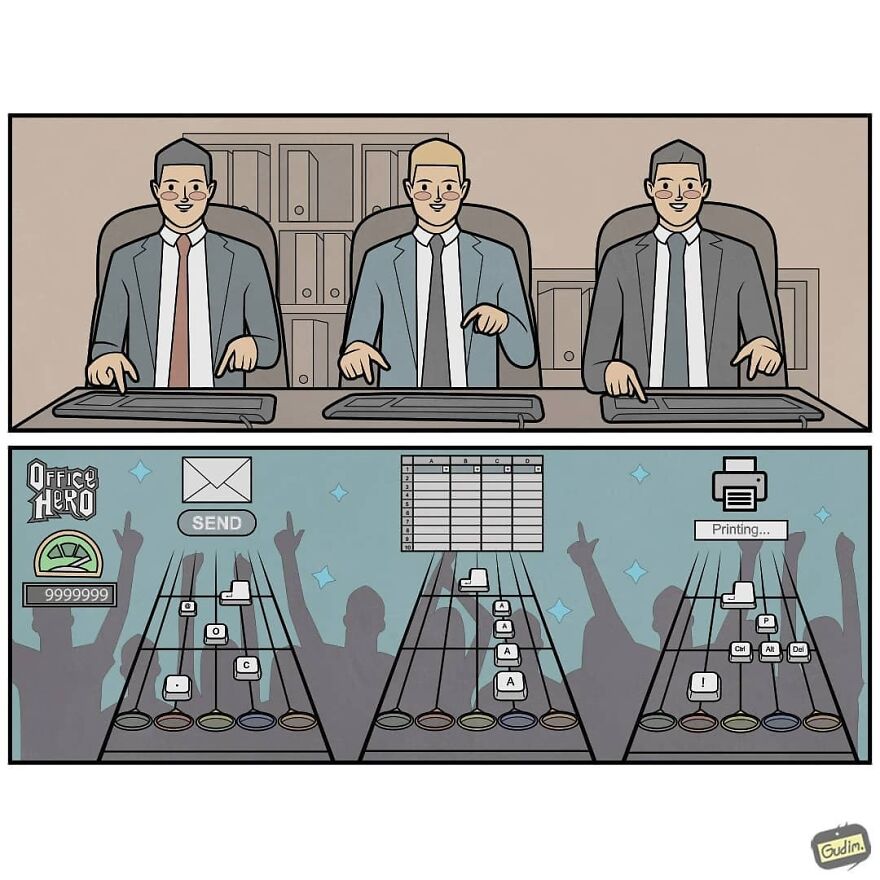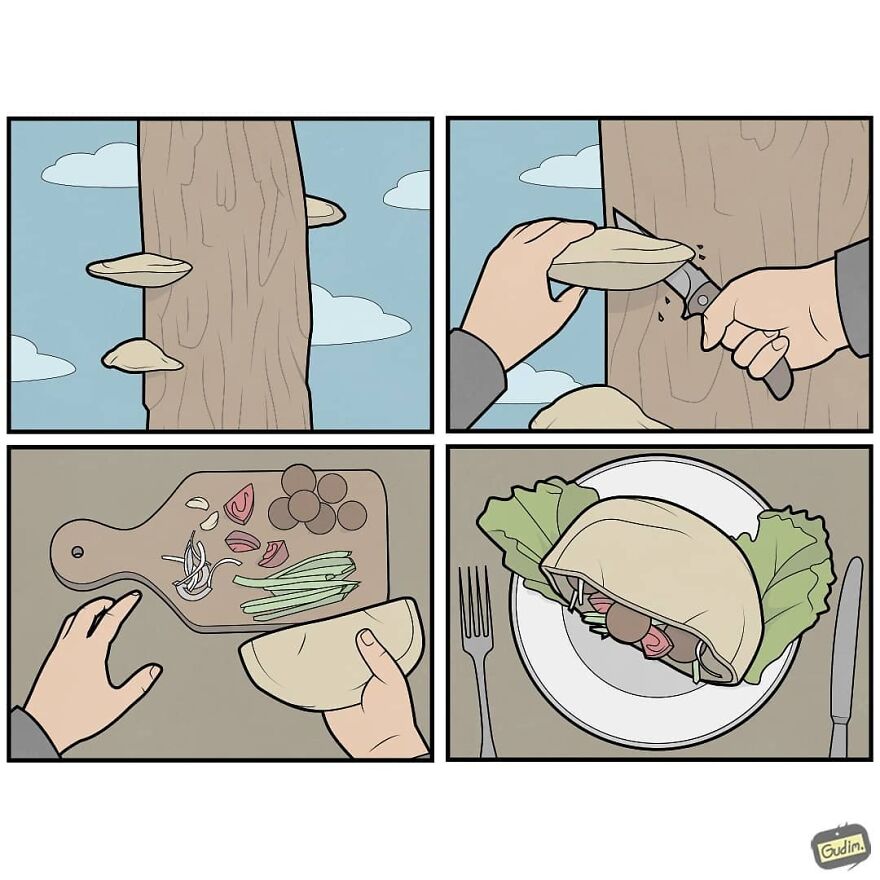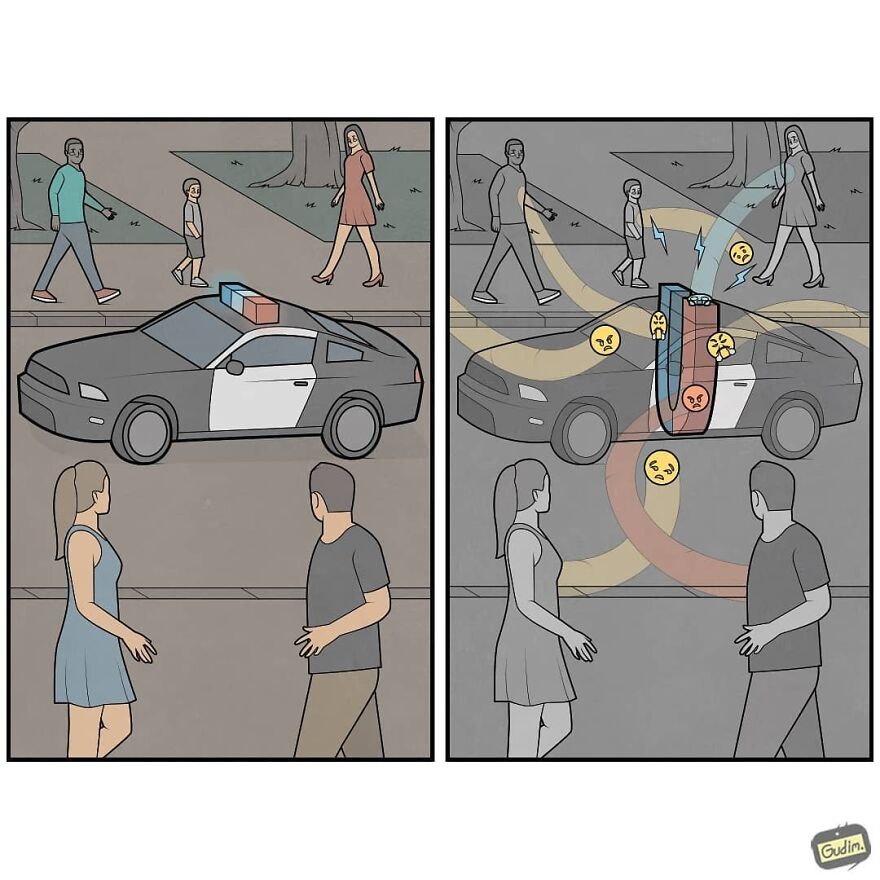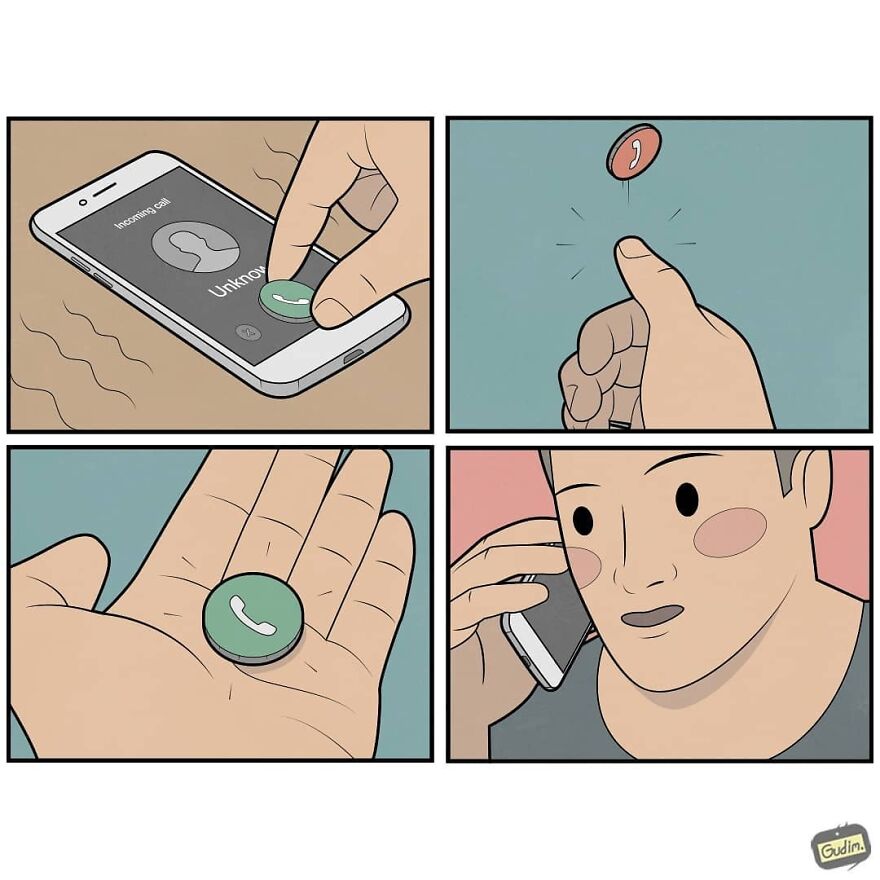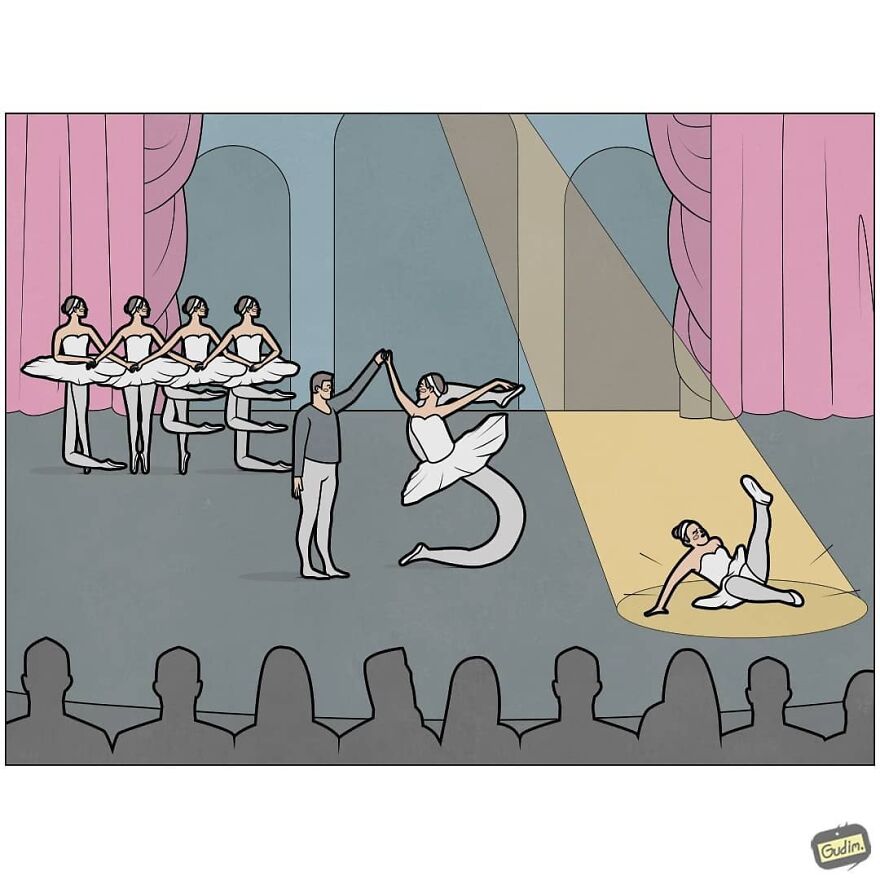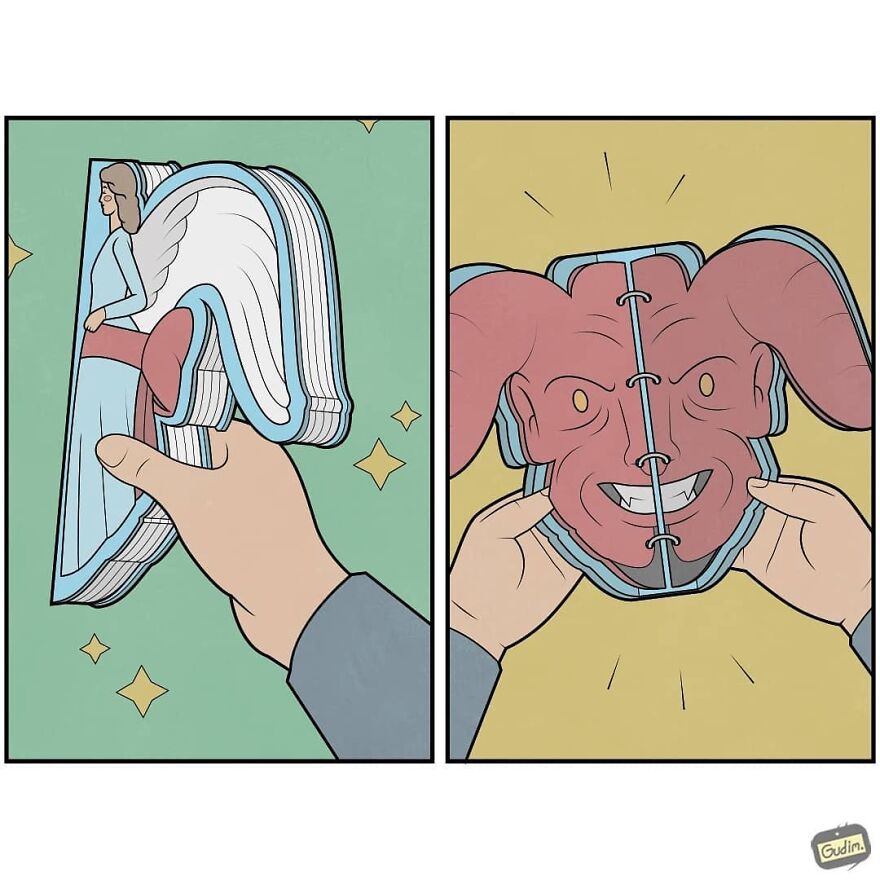
68Kviews
30 More Sarcastic Comics That You Might Need To See Twice To Understand By Gudim
Interview With ArtistIf you are here, you already have something in common with this Russian artist. He creates comics and illustrations to fight boredom and spot something new in his daily life. Anton Gudim is known to millions of people online for his sarcastic and wry illustrations and out-of-the-box way of talking about modern society and random situations that will definitely help you keep your mind occupied with some food for thought. Some of them are absurd and oddly disturbing, others are spot-on social critique and clever observations of what's wrong with our society, but all of them offer a unique and humorous perspective on the world that surrounds us which is often presented in the most unexpected and bizarre way.
Scroll down to see the most recent work from Gudim and upvote your favorites. And if you want to see more, we have everything already served for you—check out all the previous posts on Bored Panda here, here, here, here, and here.
More info: Instagram | patreon.com | twitter.com | behance.net
This post may include affiliate links.
Gudim has been drawing for as long as he can remember. He used to draw cards and silly comics for his friends, but the Moscow-based artist has always been good at math and chose to pursue a technical education. He currently works as an IT engineer by day to pay the bills, but he took up a hobby of illustration more seriously over 7 years ago and has been drawing almost every day. It was his way to compensate for the lack of creativity in his life. This hobby led to insane online popularity—his comics have gone viral all over the internet, he already has one million followers on Instagram, and has even held a real-life solo exhibition. He said he would like to have a personal exhibition abroad or another mural on the street.
"Of course, 7 years ago, when I'd just started drawing under the Gudim brand, I could not have imagined such a thing. After a while, seeing how my work was developing, I could assume that one day the figure of 1 million would be surpassed. It took a long time to reach it, it was not an explosion of popularity, so it seems to be quite normal, considering how much effort was invested in the creation of each work. But even with that number, I absolutely don't feel popular. I remember the day this number appeared on the screen of the Instagram application, and it was not the day when I felt famous, it was the day of accepting that my work was appreciated and I need to move on. Thanks to my subscribers, I am very grateful that I have them," Gudim told Bored Panda.
Gudim's unusual and witty observations of the world around him are not a given, but, as the artist likes to point out, a skill he has been working on through the years. He reflects on the world we live in through out-of-this-world vector illustrations without boundaries. His imaginary work is not something you will encounter in daily life, yet often carries a deeper message about reality while challenging people to look at everyday things from a different perspective. In a previous interview with Bored Panda, he told us that his inspiration comes from his surroundings, but the key is to "take a new look at regular things."
However, he admitted to us that he is constantly inspired by other artists, even outside the comic world.
"Someone constantly influences me and I always discover new artists. At this stage, it is more interesting for me to discover new artists outside the comics world, although many people who draw comics (such as Perry Bible Fellowship, Poorly Drawn Lines, False Knees, Jeroom, and others) still inspire me. I like artists (Rustam QBic, Slava Ptrk, Seth Globepainter, Jason Limon, and others), I like video content creators (Pablo Rochat, Romain Laurent, Oliver Latta, Scorpion Dagger, Kevin Lustgarten, and others), I recently discovered an interesting Russian cartoonist Andrei Popov. There are a lot of talented people around!"
Gudim's illustrations are not limited to any particular genre, subject, or tone. Just like life itself, his art can be funny, light-hearted, or plain absurd, or bizarre.
"At first, I just told jokes (these were almost classic comics with dialogue), puns. Then the jokes became more absurd and dialogue almost disappeared from the comics. I liked to draw comics about objects, without characters in the frame. Over time, humor began disappearing from some works but did not disappear altogether. It seems strange that some artists do not use humor in their works, because a layer of humor is a large layer of creativity. Life is not only serious and dark, but also funny at times, but often it is a tragicomedy. In the end, I began to focus on playing on the unexpected properties of things and events. Now it was interesting for me to try to go to genres adjacent to just digital drawings: such as video, sculpture, or street art."
Gudim finds it difficult to describe his artwork and says that it always depends on the viewers' experiences and perspectives.
"Much depends on the experience of a person. It's like playing the same song to a person who doesn't listen to music and a person who listens to music a lot. The first will hear sounds, the second will be able to determine the genre, recognize the instruments, compare with already existing musical works. For people who are not interested in internet comics, cartoons, art, my drawings are more likely to be something crazy and meaningless. For people who love creativity, spend a lot of time in social networks, perhaps my creativity will be something 'alternative.'"
Most of Gudim's comics are based on visuals and have little to no dialogue or explanation text. He explained how he ended up with this style:
"It's just the format that I came to and which I consciously chose. Why? Firstly, any reasonable restrictions contribute to the development of creativity. Secondly, I like it from an aesthetic point of view. Thirdly, I do not need to translate text for my international audience. Fifthly, captions usually come to the fore and drawings become just an addition to dialogues and text descriptions, and I always prefer the visual side. At the end of the day, you can just tell the dialogue from the comic and that will be enough. In my case, you need to look, no description can replace what I draw.
The artist said that the most challenging part of his artwork is coming up with ideas and picking what will actually work.
"The most difficult thing, of course, is to come up with what to draw about. Moreover, the flow of ideas can be quite strong (I take notes with ideas every day), but the most difficult thing is to separate a good idea from a bad one, see the potential in one and understand that, for example, another idea will not work. The simplest thing is to draw (after you have chosen an idea, decomposed it into frames, and come up with a composition). Here you need to clarify that good and neat way to draw what you came up with. Choosing a color palette is also not easy, but still, for me, this is an easier stage than coming up with and selecting ideas."
Gudim commented on the feedback he gets online: "It seems that in the comments there will always be someone who did not get the comic at all and the one who understood the comic absolutely correctly and describes in detail what I put into this drawing. Due to the fact that I do not use words, some ideas can really be interpreted in a non-obvious way. Regarding criticism and negativity: any person with any audience is faced with this. Of course, it is unpleasant to read criticism in the spirit of "I don't like them, I don't know why" because this does not contribute to my growth in any way, but only knocks me down and plunges me into darkness. But I'm used to it. I am open to constructive criticism and certainly do not consider my drawings to be perfect. I myself criticize many of my works."
Finally, we asked how the global pandemic affected Gudim's daily life and creative process:
"I had to restructure the daily routine and learn how to self-organize. Since I had to be at home a lot, more household chores appeared, which distracted me from the creative process. Mentally, I have become less likely to be on the street, which means less likely to notice something in the environment and people. It squeezed the scope of my creative freedom a little, but I take it as part of the path because the environment also affects the drawings, and it is absolutely normal that some part of your creativity will have 'pandemic shades.' This is the time we live in."
okay so i don’t wanna be that person... but i only counted two black people in the span of 80 comics...
Really, FFS? Can't you just enjoy the comics without being perpetually offended? And what about whether women have equal representation too, or whether there are enough gay couples...
Load More Replies...The artist is Russian, and there is significantly less geographic ethnic diversity in Russia (beyond local groups) than there is in former colonial states (UK/US/France/Netherlands/etc.). There ARE hundreds of ethnic groups in Russia, but the vast majority of them (as a percentage of the whole) are native to various regions within Russia itself.
okay so i don’t wanna be that person... but i only counted two black people in the span of 80 comics...
Really, FFS? Can't you just enjoy the comics without being perpetually offended? And what about whether women have equal representation too, or whether there are enough gay couples...
Load More Replies...The artist is Russian, and there is significantly less geographic ethnic diversity in Russia (beyond local groups) than there is in former colonial states (UK/US/France/Netherlands/etc.). There ARE hundreds of ethnic groups in Russia, but the vast majority of them (as a percentage of the whole) are native to various regions within Russia itself.

 Dark Mode
Dark Mode 

 No fees, cancel anytime
No fees, cancel anytime 

























